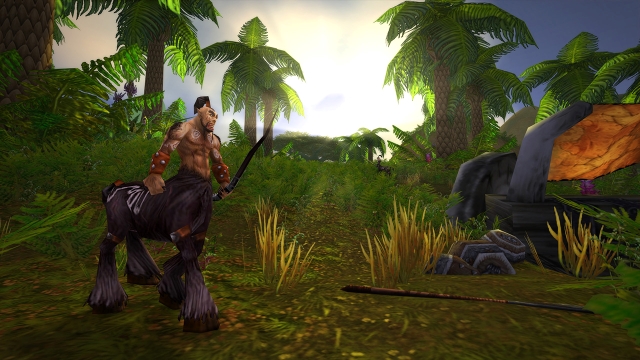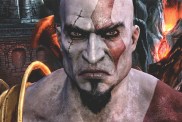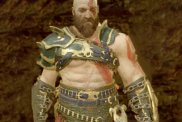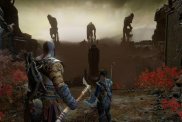By the end of the month, everyone is going to be playing World of Warcraft like it’s 2006. WoW Classic will finally be available on August 27, 2019, for those looking to go back to the game as it was over 10 years ago. Blizzard Entertainment recently announced some crucial details for the upcoming game, including the launch process, the minimum and recommended PC requirements, realm choices, and character creation. This WoW Classic beginner’s guide will help you understand what exactly this version of the game is, as well as walk you through the aforementioned features.
WoW Classic Beginner’s Guide | What is World of Warcraft Classic?
World of Warcraft Classic is a version of Blizzard Entertainment’s incredibly popular MMORPG as it was around its launch. Now, you may have noticed I said 2006 above instead of its actual launch year of 2004. That is because World of Warcraft Classic is based on the game as it was back in 2006, specifically version 1.12.1.
This is also meant to be an authentic recreation of what World of Warcraft was 13 years ago. That means all the convenient features, even something as simple as a quest tracker, will not be in the game. Back in May during its beta test, a “Not A Bug” list was posted on the official forums giving players an overview of the “bugs” that are actually features of the game.
ALSO: WoW Classic Classic character name reservation guide
WoW Classic Beginner’s Guide | Minimum PC requirements

You may be wondering if your PC will be able to play WoW Classic when it launches later this month. Many of you looking to play shouldn’t have any trouble running the game as the minimum requirements to play are pretty low.
In order to install and play WoW Classic, you need the 64-bit version of Windows 7 with the latest Service Packs installed. In terms of video card requirements, the game calls for an NVIDIA GeForce 8800 GT 512 mb, AMD Radeon HD 4850 51 MB, or Intel HD Graphics 4000. It will also require 2 GB RAM unless you are using an integrated graphics card, in which case you will need 4 GB RAM. Lastly, the WoW Classic will only take up 5 GB of hard drive space.
Essentially, just about any keyboard with an integrated graphics card and 4 GB of RAM should be able to run WoW Classic without any problems. Since this is in online game, you will need a broadband internet connection at the very least. The minimum requirements listing also says you will need at least a 1024 x 768 display and a keyboard and mouse. Other input devices, such as a controller, will not be supported.
WoW Classic Beginner’s Guide | How to install and launch World of Warcraft Classic
If you are able to run World of Warcraft Classic on your current PC, which you should have no problem doing, you can begin the installation process. Before you do so, make sure that you currently have an active World of Warcraft account. While WoW Classic does not require any additional payment, you do need to have an active account to play this version of the game.
If you have activated a World of Warcraft account, here are the steps you need to take to start the installation process:
- Open the Battle.net app on your desktop and click on the World of Warcraft tab on the left-hand side of the menu.
- Right above the “Play” button, you will find a “Version” drop-down menu. Click this and select “World of Warcraft Classic.”
- If you have multiple World of Warcraft accounts, there will be an “Account” drop-down menu as well. Click this, then select which account you would like to use.
- Click the install button.
- The “Play” button will show when the installation is complete. Click this button to begin World of Warcraft Classic.
WoW Classic Beginner’s Guide | Realm types

If you’re a seasoned WoW player, you can skip this section as you probably know exactly which kind of experience you want from the game. However, if you’re new to WoW, you will want to know the different realm types before beginning.
When you begin your journey in WoW, you have to choose a server to play on. These servers have a realm type which describes the play style of the server with a single word or acronym. Here are all the realm types and a brief explanation of each one:
- Normal: Somewhere in-between a PvP and PvE (Player vs. Environment) server, this is for players who don’t want to always keep their guard up. All zones in this realm type are contested, meaning you must flag yourself to engage in a PvP scenario. However, if you find yourself in an enemy faction’s city, you will be automatically flagged for PvP.
- PvP (Player vs. Player): PvP realm type servers allow for open-world PvP. This means anyone from the opposing faction can engage in a PvP scenario without warning. The only “safe” zones in PvP servers are starting zones.
- RP (Role-Play): Role-play servers are for players who want to do just that: role-play their character. RP servers have the Normal ruleset, which means you will need to flag yourself to be open to PvP scenarios.
- RP PvP (Role-play Player vs. Player): RP PvP servers are exactly like RP servers except with the PvP server ruleset. This means open-world PvP is active.
WoW Classic Beginner’s Guide | Character creation and starting locations
Current WoW players will be used a plethora of character creation options, with a variety of different races and classes to choose from. For Wow Classic, Pandaren, Worgen, Blood Elf, Draenei, and Goblins will not be playable as they were added after vanilla WoW. Additionally, Death Knight, Demon Hunter, and Monk classes will not be available for the same reason.
Here is a breakdown of the races of each faction (Alliance and Horde) as well as the classes available for each race:
Alliance races and classes
- Dwarves: Hunter, Paladin, Priest, Rogue, Warrior
- Gnomes: Mage, Rogue, Warlock, Warrior
- Humans: Mage, Paladin, Priest, Rogue, Warlock, Warrior
- Night Elves: Druid, Hunter, Priest, Rogue, Warrior
Horde races and classes
- Orcs: Hunter, Rogue, Shaman, Warrior, Warlock
- Tauren: Druids, Hunter, Shaman, Warrior
- Trolls: Hunter, Mage, Priest, Rogue, Shaman, Warrior
- Undead: Mage, Priest, Rogue, Warlock, Warrior
Remember to check each race’s unique traits or abilities. Some of the races are better suited for specific classes. For example, Taurens make decent warriors thanks to their race-specific ability War Stomp, which stuns enemies, as well as Endurance which gives them more health.
Starting Locations and Capital Cities
Depending on which Race you decide to start your WoW Classic journey with will determine your starting zone. Additionally, Some races have their own Capital City. Here is a breakdown of both Alliance and Horde starting zones and Capital Cities:
Alliance
- Night Elves
- Starting zone: Teldrassil
- Capital City: Darnassus
- Dwarves
- Starting zone: Dun Morogh
- Capital City: Ironforge
- Gnomes
- Starting zone: Dun Morogh
- Capital City: Ironforge
- Humans
- Starting zone: Ewynn Forest
- Capital City: Stormwind
Horde
- Orcs
- Starting zone: Durotar
- Capital City: Orgrimmar
- Tauren
- Starting zone: Mulgore
- Capital City: Thunder Bluff
- Trolls
- Starting zone: Durotar
- Capital City: Orgrimmar
- Undead
- Starting zone: Tirisfal Glades
- Capital City: Undercity
WoW Classic Beginner’s Guide | Abilities, weapon skills, spells, talents, and professions

One of the biggest deviations between modern WoW and vanilla WoW is how you get new abilities, skills, and talents. As you level your character in WoW Classic, you will earn new abilities based on which class you chose. In order to get these abilities or rank up ones you already have, you will need to visit class trainers in a Captial City. More often than not, you will go to your designated classes Capital City.
Once you hit level 10, you will be able to allocate points to the talent tree. This will be a blast from the past for players who have stuck around since 2004 since this facet of the game has changed quite significantly. By the time you hit level 60 (WoW Classic‘s level cap) you will garner a total of 51 points and distribute them between three distinct talent trees. This typically determines which role you will play once you get into dungeons or raiding.
WoW Classic also has weapon skills which are imperative to your performance in combat. As you use a specific type of weapon, you will become more skilled which has significant benefits, especially once it comes time to get raid-ready. Certain classes are more proficient with specific weapon types, so it is advantageous to use those types from the beginning. Otherwise, you will need to visit a weapon master in your Capital City to learn weapon skills your class does not have.
Here are all the weapon skills that will be available in WoW Classic:
- Bows
- Crossbows
- Daggers
- Guns
- One-Handed Axes
- One-Handed Maces
- One-Handed Swords
- Polearms
- Staves
- Swords
- Thrown
- Two-Handed Axes
- Two-Handed Maces
- Two-Handed Swords
- Unarmed
- Wands
There are also Professions in WoW Classic that are imperative if you want to get the most out of your weapons and armor. There are a total of nine Primary Professions to choose from in which you will choose two to train in. Here is the list of Primary Professions available in WoW Classic:
- Alchemy
- Blacksmithing
- Enchanting
- Engineering
- Herbalism
- Leatherworking
- Mining
- Skinning
- Tailoring
Additionally, there are three Secondary Skills every character can learn. There are no restrictions on how many of these you can learn. Here is the list of Secondary Skills available in WoW Classic:
- Cooking
- First Aid
- Fishing
WoW Classic Beginner’s Guide | Dungeons and raids
There have been a lot of quality-of-life changes to how WoW deals with matchmaking and finding players to join a raid or dungeon. For WoW Classic, Blizzard Entertainment has thrown all those changes out the window.
If you want to look for people trying to join a raid or dungeon, you will have to do it the old fashioned way, and use the Looking for Group channel. If you want to summon the player to the dungeon, you will need a Warlock to use the Ritual of Summoning to target a group member and use the ability. This also requires a soul shard and two additional party members to execute. Otherwise, you will just have to wait until they travel to your destination.







